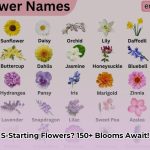Want a kitchen that feels both chill and chic? Teal cabinets might be your answer. This guide dives into everything teal, helping you find the perfect shade for your kitchen. We’ll cover how lighting and cabinet material can affect color perception, and how to make teal work with different styles, like modern or farmhouse. Plus, we’ve got a list of our top teal paint picks to get you started. So, whether you’re just beginning your kitchen renovation or ready to paint, we’re here to help you create the teal kitchen of your dreams.
Decoding the Teal Spectrum
So, you’re envisioning a kitchen bathed in tranquil ocean hues? Teal cabinets are trending, and with good reason! But with a sea of teal shades, picking the perfect one can be overwhelming. This guide navigates the nuances of teal, ensuring you find the best color for your kitchen cabinets—from deep ocean blues to vibrant aquamarines.
Understanding Teal Undertones
Teal isn’t just blue-green; it’s a family of shades, each with a unique personality. Some lean towards blue, like a deep lagoon, while others whisper hints of green, like a sunlit sea. Grayed-out teals offer a sophisticated, muted feel, whereas brighter teals inject energy. Understanding these nuances is key. Do you envision a calm or vibrant atmosphere? This question helps narrow your options.
Top Teal Cabinet Hues
Choosing your dream teal can feel daunting, so here are some popular and versatile shades to inspire you. Your perfect teal might be a variation of one of these, or even a custom mix!
| Teal Name | Brand | Notes |
|---|---|---|
| Aegean Teal | Benjamin Moore | A balanced and serene classic with a timeless feel. |
| Wythe Blue | Benjamin Moore | Aegean Teal’s sophisticated cousin, featuring a grayish undertone for a subtler look. |
| Spearmint | Sherwin-Williams | A refreshing, slightly brighter, airy and cheerful teal with more green influence. |
| Moody Blue | Sherwin-Williams | A deep, saturated teal bordering on navy, creating a rich and luxurious feel. |
| In the Navy | Sherwin-Williams | A deep, almost-navy hue with a whisper of teal, for a touch of mystery. |
Remember, lighting significantly impacts how paint colors appear. Test your chosen color on a large sample board in your kitchen before committing.
Designing Your Teal Kitchen
Choosing the cabinet color is just the beginning. Now, let’s craft a complementary palette.
Colors that Complement Teal
- Crisp Whites: White creates a refreshing contrast, making teal cabinets pop. Consider white countertops, backsplashes, or walls.
- Warm Woods: Warm wood tones (oak, maple) offer an earthy balance to teal’s coolness. Wood flooring, open shelving, or butcher block countertops create a natural vibe. Unleash your inner artist with the best colors for faux limewash on your walls.
- Dramatic Blacks: Black accents (hardware, light fixtures, range hood) create a dramatic and elegant contrast.
- Grays: Gray countertops, especially quartz or concrete, create a sophisticated backdrop.
Styling Teal Across Design Styles
Teal’s versatility shines across various design styles.
- Modern: Clean lines and minimalist hardware let teal take center stage. Sleek nickel pulls against deep teal cabinets create a sophisticated look.
- Farmhouse: Distressed teal cabinets paired with brass hardware, open shelving, and vintage accents bring unexpected charm to the rustic aesthetic.
- Coastal: Lighter teals shine in coastal kitchens. Accented with natural wood, wicker, and coastal décor, they evoke a seaside cottage vibe. A big leaf house plant can further enhance this aesthetic.
- Bohemian: Teal provides a vibrant backdrop for eclectic patterns and textures like patterned tiles and woven rugs.
Hardware and Finishing Touches
Hardware is the jewelry of your kitchen.
- Gold or Brass: These warm metallics add luxury to deeper teal shades.
- Black: Black hardware provides a striking modern contrast.
- Brushed Nickel: Brushed nickel offers a timeless and versatile finish.
A contrasting or complementary backsplash adds visual interest. Maximize natural light, which makes teal shine. Carefully chosen fixtures create ambiance.
Addressing Potential Challenges
While versatile, teal presents some design considerations:
- Small Kitchens: Darker teals can overwhelm small spaces. Opt for lighter shades, strategically use white, or apply teal only to lower cabinets or the island.
- Commitment Concerns: Start with a teal island or accent wall before committing to a full teal kitchen.
The best teal is the one that speaks to your style. Trust your instincts, experiment, and enjoy the process!
Is Teal Right for Your Kitchen Cabinets?
Teal kitchen cabinets are a question on many homeowners’ minds. Teal blends classic and contemporary elements, instantly upgrading any kitchen. It’s not a fleeting trend; it has staying power.
Teal: A Timeless Choice
Teal cabinets offer depth, personality, and a touch of the unexpected. It’s versatile, working with modern, farmhouse, coastal, or traditional styles. Teal creates a serene atmosphere—a kitchen you’ll love spending time in. Studies suggest colors like teal positively impact mood and creativity.
Exploring the Shades of Teal
From the deep blue-green of the ocean to a sparkling turquoise lagoon, teal offers a spectrum of possibilities. Muted teals provide a subtle, calming presence. Which shade resonates with you?
Harmonizing Teal
Teal complements various colors and materials. Crisp white countertops create contrast, while warm woods bring balance. Black adds drama, gray sophistication. Butcher block countertops are a great pairing. White subway tile is a classic backsplash choice, but consider creative patterns or natural stone. Hardware choices (gold, brass, black, brushed nickel) dramatically change the feel. Anchor your teal kitchen with wood floors, tile, or vinyl.
Real-Life Teal Kitchens
Searching “teal kitchens” online provides a wealth of ideas. See how teal harmonizes with white, lilac, and pale gray. Real-life renovations and design blogs help visualize teal in your space.
Practical Considerations
Lighting is crucial. Teal looks different under various lighting conditions. Always test paint samples in your kitchen’s natural light. Darker teals show dirt more readily, so a durable, easy-to-clean finish is essential. DIY painting is an option, while professional painting ensures a flawless finish.
Addressing Hesitations
If you’re hesitant, start small. A teal island or accent wall offers a taste of the trend. In small kitchens, lighter teals or strategic white placement create spaciousness. Teal lower cabinets with white upper cabinets are popular. With planning, teal can transform your kitchen.
Pro Tip: Incorporate teal beyond cabinets. A teal backsplash, range hood, or small appliances adds personality. Teal dish towels or artwork bring in the color subtly.
Choosing a cabinet color is a big decision. Take your time, research, and choose a color you love. Teal, with its versatility and calming effect, might be perfect for your dream kitchen.
Trending Kitchen Cabinet Colors
While we’ve discussed popular cabinet colors, let’s explore current trends.
The Rise of Green
Deep forest green is trending, possibly surpassing neutrals like white and beige. This earthy green brings sophistication and drama, connecting to the trend of bringing nature indoors. If you seek a trendy yet timeless color, forest green might be your pick.
Teal: Tranquil and Versatile
If green isn’t your style, consider teal. From deep ocean blues to vibrant aquamarines, teal offers diverse shades. Lighter teal with white countertops and warm wood evokes a coastal vibe. Deeper teal with black hardware grounds a modern kitchen. Teal’s versatility suits various styles.
White: The Enduring Classic
Despite new trends, white remains a favorite. It’s timeless, brightens spaces, and provides a neutral backdrop for adding pops of color elsewhere. While not the trendiest, white is a reliable classic for a clean and airy feel. Some experts believe white cabinets provide design flexibility.
Choosing the Right Color
Consider your kitchen’s style and size. Darker shades like forest green create a warm atmosphere in larger kitchens but might overwhelm smaller ones. Lighter colors like white or soft teal make smaller kitchens feel more open.
Pro Tip: Test paint samples directly on cabinets or large cardboard pieces in your kitchen to see how lighting affects the color throughout the day.
A Cohesive Look
Your cabinets are one design element. Consider how the chosen color interacts with countertops, backsplash, flooring, and appliances. Visualize the overall picture for a satisfying long-term decision.
It’s All About You
Trends are fleeting. Choose a cabinet color you love—whether forest green, teal, or white—that reflects your style and creates a space you enjoy. Prioritizing personal preference over trends leads to greater satisfaction.
Complementary Colors for Teal
Teal offers numerous decorating possibilities. What colors truly complement it? Let’s explore teal’s harmonious companions.
Coral: The Classic Complement
Coral provides the highest contrast to teal, creating a dynamic pairing. This works well for accents, but its intensity might not suit every preference.
Softer Variations
Peach, salmon, or muted terracotta offer a gentler contrast, creating a warmer atmosphere, well-suited for bedrooms or living rooms.
Beyond Complementary Colors
Analogous colors (blues and greens next to teal on the color wheel) evoke a calming, cohesive feel. Triadic schemes (teal, purple-violet, yellow-orange) create a vibrant yet balanced palette. Split-complementary schemes (teal, red, yellow) offer less intense contrast than direct complements.
Considering Teal’s Temperature
Cool teals harmonize with cool tones like lavender, blue-gray, navy, and silver. Warm teals pair well with golds, browns, mustard yellows, and creamy neutrals.
Neutrals
Neutrals work wonders with teal. White provides a clean backdrop, gray adds sophistication, and beige/cream infuses warmth.
The “best” is subjective and depends on your desired mood and style. Ongoing research into color psychology may illuminate how color combinations affect our perceptions. The best complementary color for teal resonates with your aesthetic and creates the desired atmosphere.
- Grass Forever in Livermore: Your Guide to Artificial Turf - April 22, 2025
- German Roaches vs. American Roaches: Key Differences and Control - April 22, 2025
- 150+ Flowers That Start With S: A Comprehensive Guide - April 22, 2025










